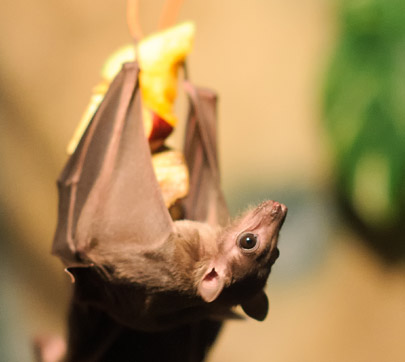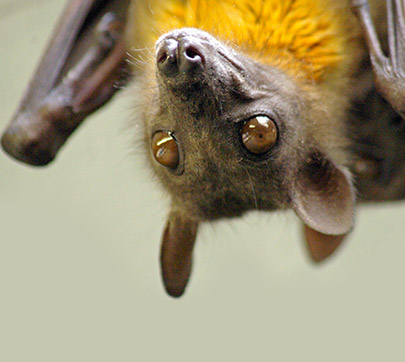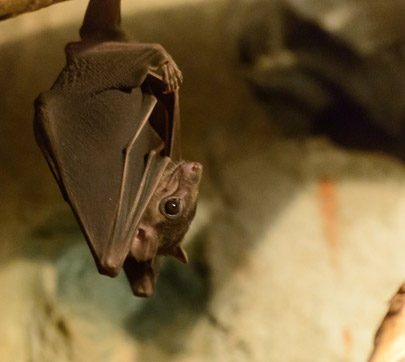All About Animals
Fruit Bats
In the Tropical Forest, look for the bats hanging out during the day above the tapir exhibit in the tall trees as they sleep through the day. Or, in the winter, they start to fly around just about an hour before the Zoo closes.
About the Straw-Colored Fruit Bat
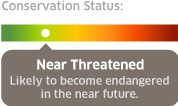
Geographic Range:
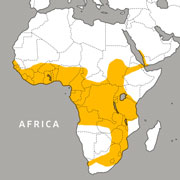
Class: Mammalia
Order: Chiroptera
Family: Pteropodidae
Genus: Eidolon
Species: helvum
Named for its tawny brown color and dietary preferences, the straw-colored fruit bat is native to Sub-Saharan Africa. It lives in colonies of 100,000 to 1,000,000, roosting by day in tall trees and sometimes lofts and caves. Though their bodies are small—about 5 to 9 inches long—the straw-colored fruit-bat’s wingspan can reach three feet. The bat’s strong, tapered wings allow it to fly great distances—it has actually been found 125 miles out to sea!


